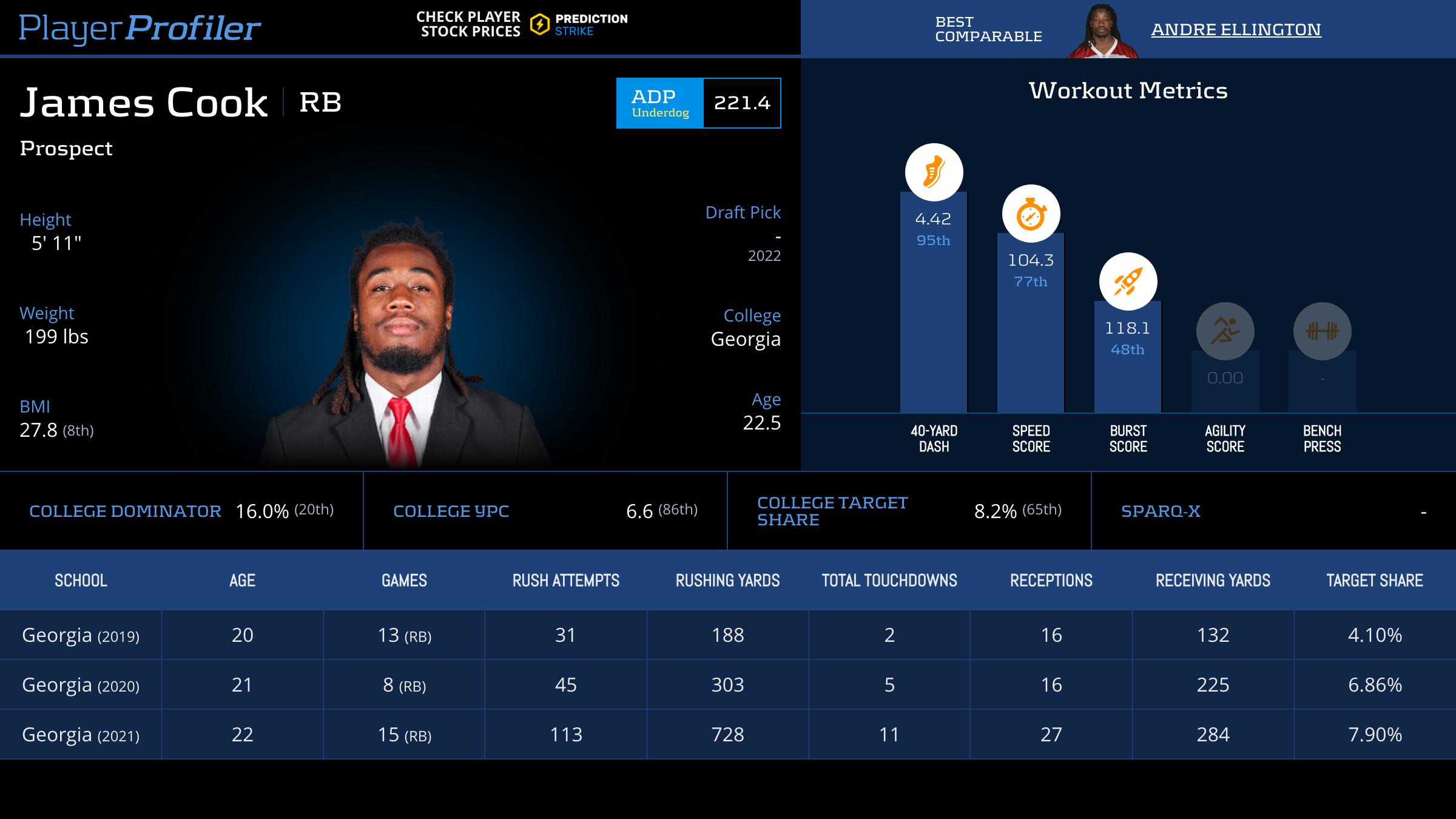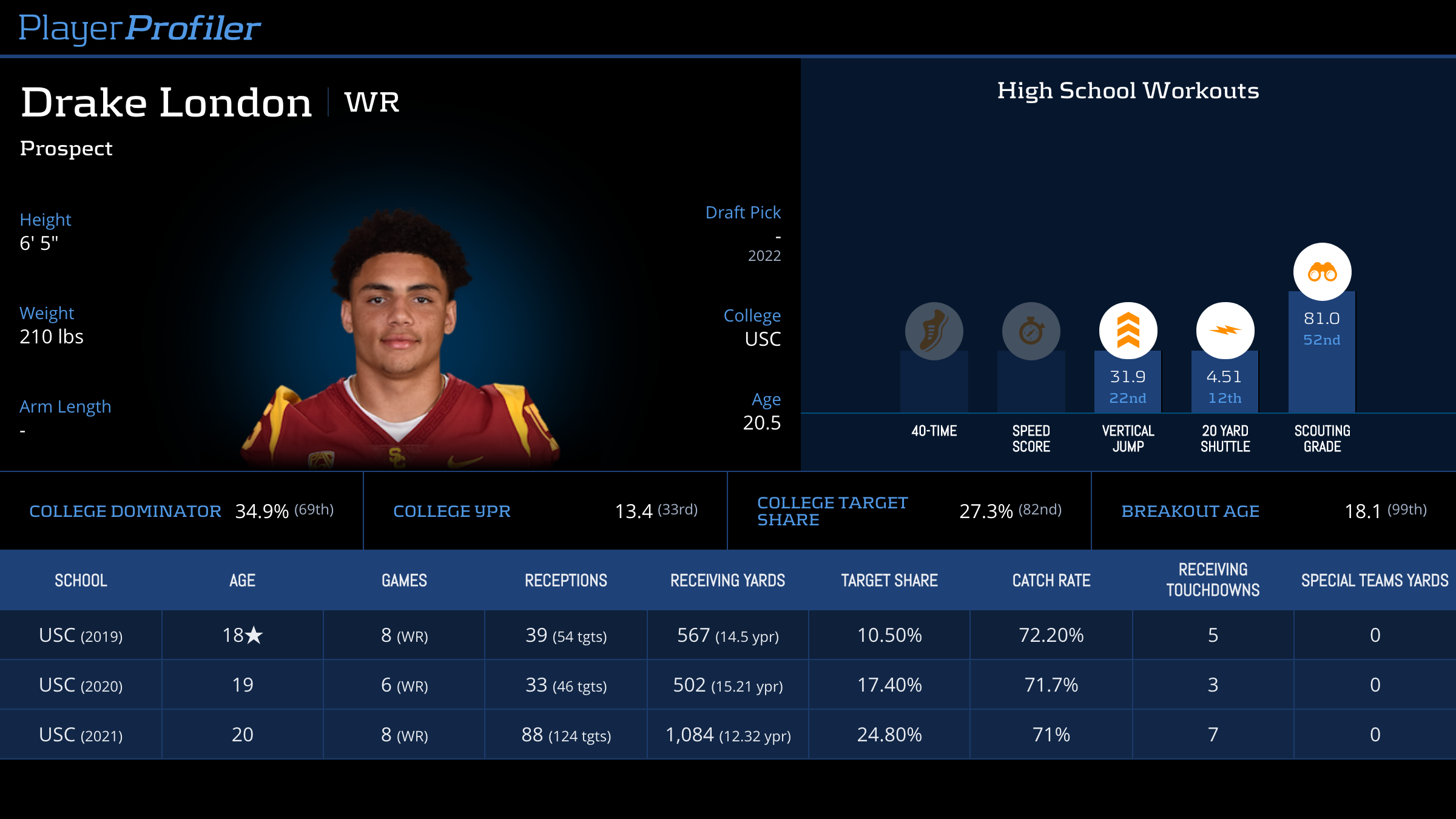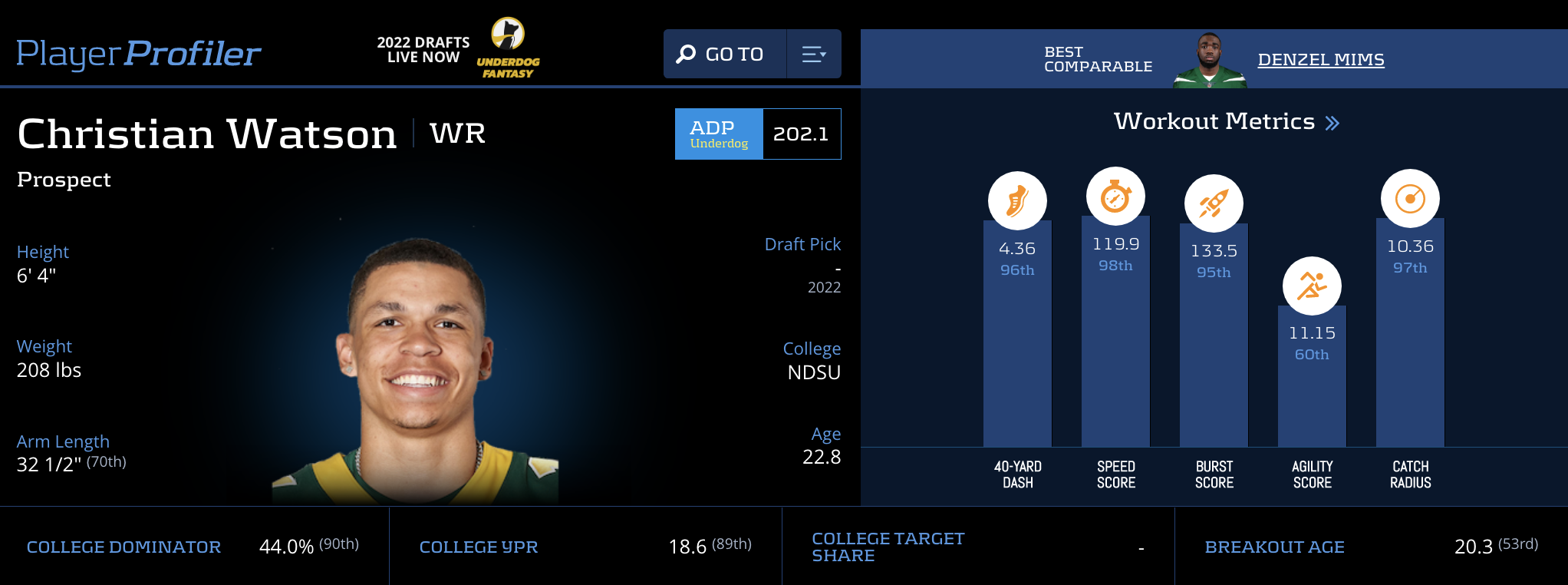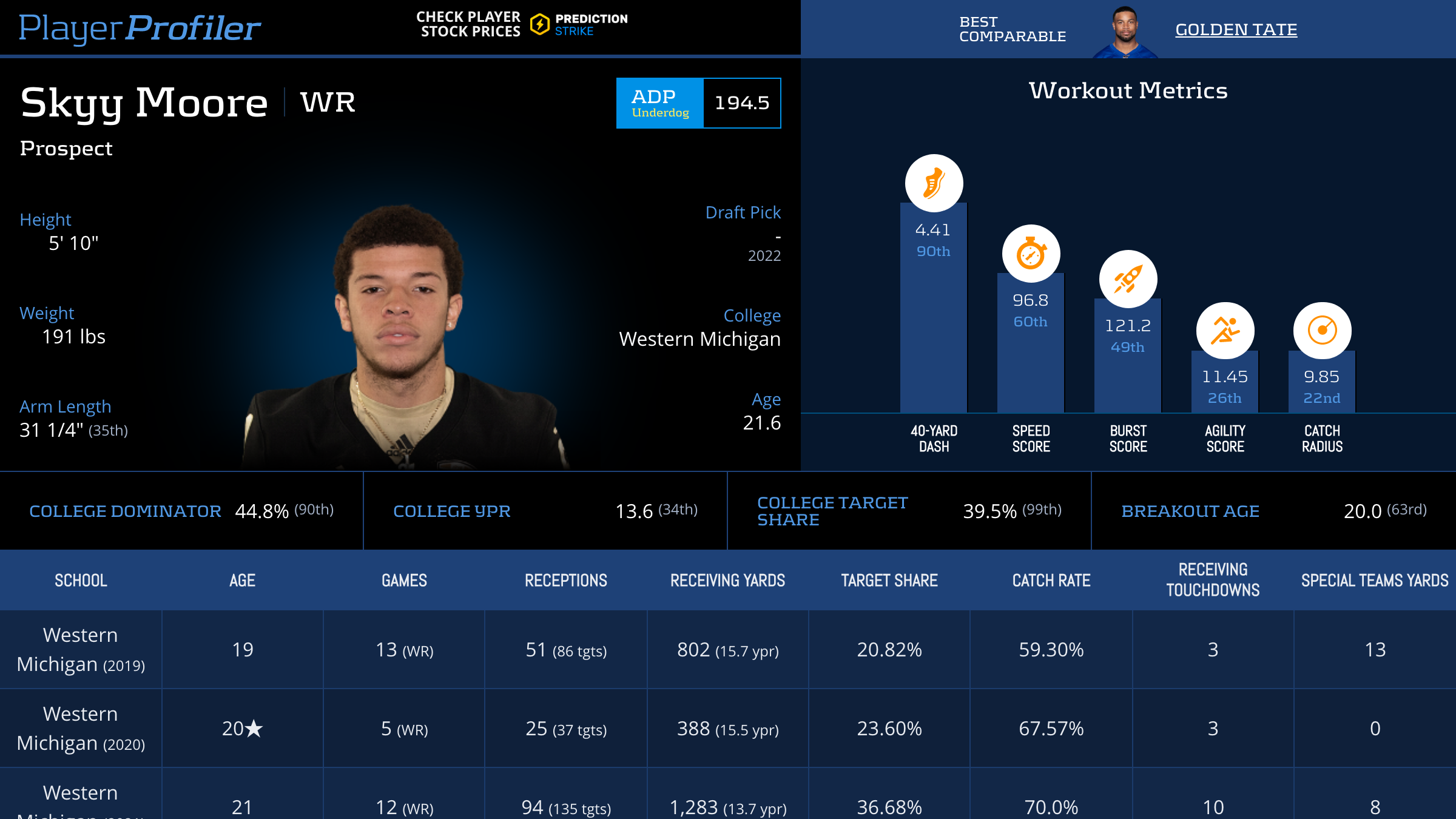The NFL’s version of a music festival has come and gone. 262 names were called and even more dreams came true amidst a new year’s twist on the chaos that comes with the NFL Draft. This year was no exception. With every draft, however, come winners and losers based on the landing spots of these players and what picks these teams used to acquire them. There are many more, but there are nine 2022 NFL Draft Winners in particular who stand out above the rest.
Quarterback
Kenny Pickett, Pittsburgh Steelers
In an article written last year by the great Bill Barnwell of ESPN regarding the crop of 2021 rookie quarterbacks, he mentions that 28 of the 32 drafted in the first from 2011 to 2020 took control of their team’s starting spot by starting multiple games. Four of the five rookie quarterbacks followed that trend last season; the exception being San Francisco’s Trey Lance sitting behind Jimmy Garoppolo. So, while the Steelers signed Mitchell Trubisky in free agency, it is reasonable to expect that Kenny Pickett will take over at some point. When that happens, he walks into a fantastic situation. Not many rookies get to immediately play with skill position talent as potent as one that includes Najee Harris, Diontae Johnson, Chase Claypool, Pat Freiermuth, George Pickens, and Calvin Austin. Holy hell.
https://www.youtube.com/watch?v=w7-E08v8eJc
The Steelers offensive line isn’t all that sturdy. But Pickett does have sneaky mobility to make rushers miss and extend plays. Quibble all you want about whether or not he was a great prospect; or if he was better than fellow draftmates Malik Willis and Desmond Ridder. He ultimately got the draft capital and landing spot anybody would’ve wanted from this pedestrian quarterback class. He may not be a fantasy superstar. But he’s going to be the Steelers quarterback of the future, will start games sooner than later, and has a superb cast of weapons. He’s going to be fantasy relevant soon. Even if it’s without as juicy a ceiling as most other first-round quarterback prospects.
Running Back
Travis Etienne, Jacksonville Jaguars
Travis Etienne‘s luck broke the wrong way before he began his NFL career. He suffered a mid-foot sprain (otherwise known as a Lisfranc injury) that sidelined his rookie season. Maybe that was a blessing in disguise because of how catastrophic that season was under then-head coach Urban Meyer. But it’s been a while since we’ve seen Etienne on the field. It’s time to start getting excited about what he can do this season for a multitude of reasons.
The first is his draft capital. The best thing path toward immediate fantasy success is getting stamped into the first-round club. Since the dawn of the previous decade, 79-percent of running backs drafted in the first round have produced an RB1 season, according to PlayerProfiler’s own Jakob Sanderson.
People vastly under-estimate how much of a lock 🔒 first round running backs are for fantasy success.
Here's 2011-2020 below:
Whether or not you like Najee Harris and Travis Etienne they are probably going to produce.
79% RB1 hit rate.
69% MULTI-TIME RB1 hit rate. pic.twitter.com/Ux5rwCLEdy— Jakob Sanderson (@JakobSanderson) May 27, 2021
The draft pedigree is there for Etienne, but also the opportunity. It’s worth remembering that James Robinson tore his Achilles before the end of last season. Meaning 279 carries and 88 targets from the running back room of a year ago are up for grabs. The only other addition the Jags have made at the position was drafting Ole Miss’ Snoop Conner, who brought in 32 receptions over three seasons in Oxford. Etienne posted a 6.6 (87th-percentile among qualified running backs) College YPC mark and 12.2-percent (87th-percentile) College Target Share while at Clemson with Trevor Lawrence, who is still the Jaguars’ starting quarterback last time I checked. Etienne is set up for a big season. Jacksonville showing faith in his foot by not adding a major piece to the backfield is a big reason why.
James Cook, Buffalo Bills
There wasn’t a more intriguing Day 2 pick than this. Buffalo repeatedly moved back in the second round to ultimately land on Georgia’s James Cook with the No. 63 pick. A fascinating move because of how they play offense. They attempted the fifth-most passes in the NFL last season, and who wouldn’t when you have Josh Allen. They nearly abandoned the run altogether during the last playoff run. In two playoff games, they threw 62 passes compared to 53 rushes. Devin Singletary and Zack Moss ran the ball 27 times in the two most important games of the season.
It wasn’t as if they were doing nothing. Well, Moss actually was doing nothing. But Singletary registered nine targets in those two games. In fact, he had five games where he hauled in at least five receptions. That’s great, but with 5.7 (No. 30) yards per receptions and 0.80 (No. 31) yards per route run, catching passes is not his strong suit. You know whose strong suit *is* catching passes?
Arguably the best pass-catching back from this year’s rookie crop, Cook hauled in 59 receptions over his three seasons at Georgia; despite splitting time with a number of other pro backs and playing in a notorious caveman offense compared to the litany of collegiate spread offenses. He averaged over 10.6 yards per reception, had an 8.2-percent (65th-percentile) College Target Share, and a 6.6 (86th-percentile) College YPC average. Cook brings a totally different element to the offense. One they want to tap into after missing out on J.D. McKissic’s services in free agency. He’s an enticing player in any format who could take control of that backfield sooner than later.
Rachaad White, Tampa Bay Buccaneers
Rachaad White‘s Best Comp on PlayerProfiler is David Johnson, drafted in 2015 by the Arizona Cardinals and head coach Bruce Arians. He finished his rookie season as the PPR RB8. Enter Byron Leftwich. A member of Arians’ coaching staff from 2016 to 2018 when Johnson was still a Cardinal and finished as the RB1 and RB9 in his two healthy seasons. AND he’s Tampa’s current offensive coordinator, who runs a similar offense and playbook to Arians. Fitting that the Bucs drafted White, but if only it were that simple.
Though he could be the best rookie pass-catching back, White’s path to fantasy stardom will be harder to reach than Johnson’s. Leonard Fournette‘s mid-career renaissance and top 10 fantasy finish last season will be difficult to supplant. Ke’Shawn Vaughn is also still on the team and is someone Arians said has the capability to be a lead back. White has that capability as well.
https://www.youtube.com/watch?v=9eG9NUt_Rto
White caught 43 passes in his last collegiate season, posting an 18.9-percent (98th-percentile) College Target Share and 37.9-percent (86th-percentile) College Dominator Rating. He ran for 1,426 yards in 15 games at Arizona State, averaging over 6.3 yards a rush in that span. Fournette has been great in Tampa, but he’s never been able to escape the shadow of injury; missing seven games in the last two seasons alone. Vaughn is no slouch, but he’s garnered double-digit touches thrice in two seasons. If White can beat Vaughn out for backup duties, he’s an injury from fantasy stardom. The main question was whether he’d get Day 2 draft capital. That he got it puts him on the map in every format as someone everyone should want.
Wide Receiver
Rashod Bateman, Baltimore Ravens
Once Marquise Brown‘s trade wish was granted on Thursday, the stars aligned for a breakout Rashod Bateman season. Between Brown and Sammy Watkins‘ departures, 195 targets from Baltimore’s receiver room walked out of the door this offseason. Now, it’s important to remember that a major reason why threw the ball a ninth-most 611 times last season was in part how decimated their secondary and running back room was. But Brown still saw 100 targets the year prior and accounted for 24.6-percent of Lamar Jackson‘s targets. Baltimore’s volume will decrease from last year. It could also improve from the 406 attempts they had in 2020 when Jackson showed how capable he was in the passing game last year to keep that broken Ravens team alive.
https://www.youtube.com/watch?v=CrdQ9vgiPBE&t=5s
This is great for Bateman, Baltimore’s first-round rookie receiver from 2021. A preseason injury derailed his training camp and caused him to miss the first five games of last season. He still showed flashes of what made him a first-round pick, however. He registered at least five games of at least 50 receiving yards and three with at least 80, including a 103-yard outing in Week 14 against the Cleveland Browns. Bateman gave a glimpse of his brilliance, and it was enough for the Ravens to not only trade Hollywood, but NOT bring in another receiver during the draft. He was as stellar a draft prospect as anybody in last year’s stacked class and now has the chance to show it. There might not have been a bigger winner from the draft weekend.
Drake London, Atlanta Falcons
Drake London was slipping down mock drafts before the actual draft commenced. Atlanta made sure to make that skepticism look foolish. Using the No. 8 pick on the former basketball player and stud receiver, making him the first receiver off the board, started absolute league-wide pandemonium at the position. London walks into an uncertain quarterback situation, but must sleep well knowing the receiver room is his from the get-go.
Without Calvin Ridley, the only competition for targets between London and Kyle Pitts are themselves. Sorry Auden Tate stans, but no one else is threatening to take a substantial number of targets away from London any time soon. He may not be the fastest guy, but has more than enough speed and athleticism matched with his mammoth-sized 6-4, 213-pound frame to create separation at the point of the catch and create additional yards after. He shouldn’t have much of a problem transitioning to the NFL.
The question whether his quarterback can/will get him the ball. Marcus Mariota seems in line to start for the Falcons but had struggles getting the ball to talented receivers A.J. Brown and Corey Davis in ways Ryan Tannehill didn’t. Arthur Smith has traditionally preferred to run the ball, and without a ton of talent outside of Pitts and London, he might opt for a run-heavy offense again. But, it’s hard to believe London won’t wrestle a hefty Target Share right out the gate. London’s ceiling won’t be as lofty as others. But it’s never a bad idea to draft number one receivers as talented as him, with as far a gap from his teammates as the one that exists in Atlanta.
Christian Watson, Green Bay Packers
Skyy Moore, Kansas City Chiefs
These two are lumped together because their situations are nearly identical: Both of their teams lost all-pro receivers via trade and invested a second-round pick as part of their plan to replace them. The Packers actually tried to trade back into the first round at No. 32 to get Christian Watson. But the Vikings didn’t want the Packers to get that fifth-year option for Watson, so they settled on trading the No. 34 overall pick instead. Regardless, it’s a great sign that the Packers wanted Watson so bad that they traded two second-round picks to move up for a guy they viewed as a first-round pick. And for good reason.
Watson shined in the Senior Bowl where he and fellow Packer rookie receiver Romeo Doubs played for a Jets coaching staff that includes Packers head coach Matt LaFleur’s younger brother Mike LaFleur, who runs a similar offense to what the elder Matt runs in Green Bay. After that, Watson blew up the Combine, putting up measurables that made him look like a 6-4 Chris Godwin.
Skyy Moore did not attend the Senior Bowl, but he too lit up the Combine. Moore blazed with a 4.41 (90th-percentile) 40-yard dash. He crushed anybody in his path on the field this season too, including the eventual ACC-champion Pittsburgh Panthers. Moore gashed them to the tune of 124 yards and a touchdown on 11 receptions. He finished with more yards last season than fellow Western Michigan Bronco D’Wayne Eskridge ever did in his five seasons there. Moore didn’t just beat up on lesser competition. He made it a point to crush them when he did, with a 44.8-percent (90th-perentile) College Dominator Rating, 39.5-percent (99th-percentile) College Target Share, and 20.0 (63rd-percentile) Breakout Age.
No one is asking or expecting these two to immediately replace Davante Adams and Tyreek Hill. But both should see playing time and an expanded role right out the gate. There are 260 WR targets available in Kansas City from a year ago; there are 224 up for grabs in Green Bay. Travis Kelce and JuJu Smith-Schuster are first in line in Kansas City, but Marquez Valdes-Scantling and Mecole Hardman shouldn’t make a huge dent in Kansas City’s target distribution. Only Aaron Jones and Allen Lazard saw at least 60 targets last year and returned this season. Chasing landing spots is a dangerous game (see Clyde Edwards-Helaire), but these two have the goods and the quarterbacks to make so worthwhile. I wouldn’t fault anybody for taking these two over first-round receiver Jahan Dotson in rookie drafts, and both make great late-round fliers in redraft formats.
Tight End
Robert Tonyan, Green Bay Packers
Green Bay was rumored to take a tight end in the draft. That did not come to fruition. Robert Tonyan still needs to rehab that torn ACL. But we just mentioned that 224 targets went out the door this offseason. Green Bay tight ends totaled 95 targets last season; a number that would’ve tied George Kittle for No. 7 at the position. Tonyan has a top-five finish to his name already, even if it was off the back of unsustainable touchdown production. With so many available targets up for grabs, the pass-catching tight end role waiting for him, and entering a contract year, another big season could be in the cards if his health allows for it.






